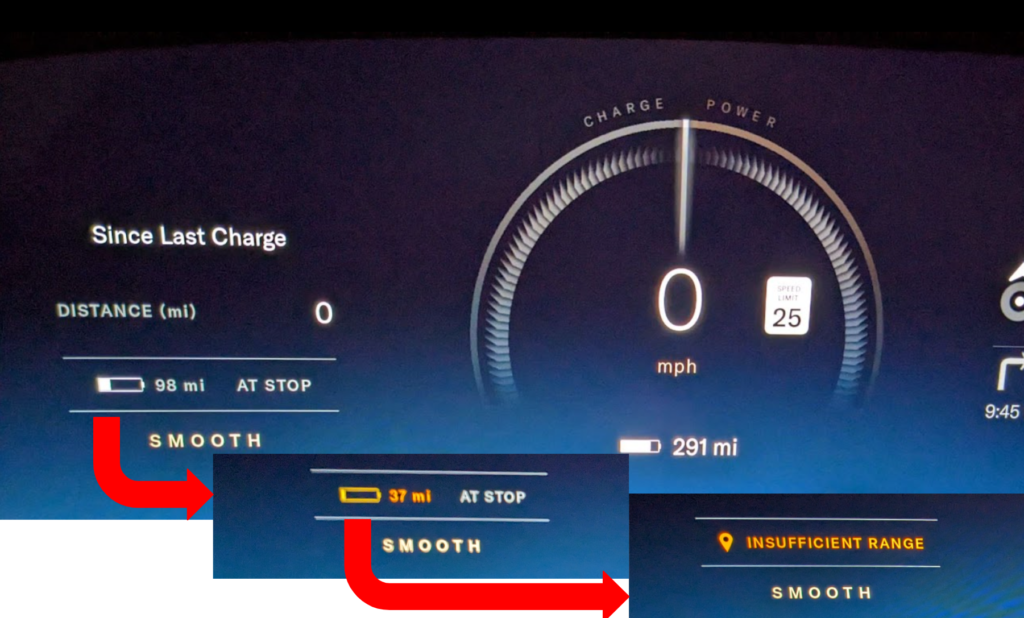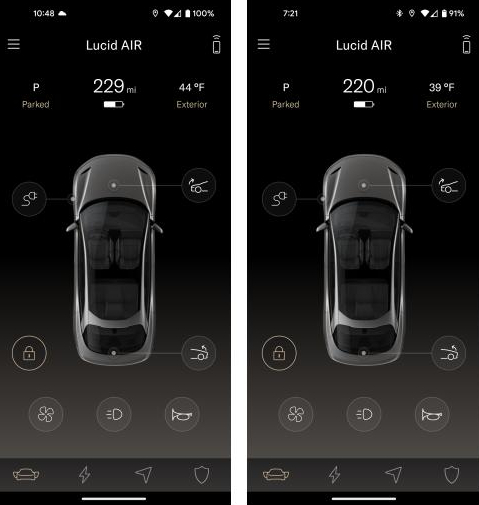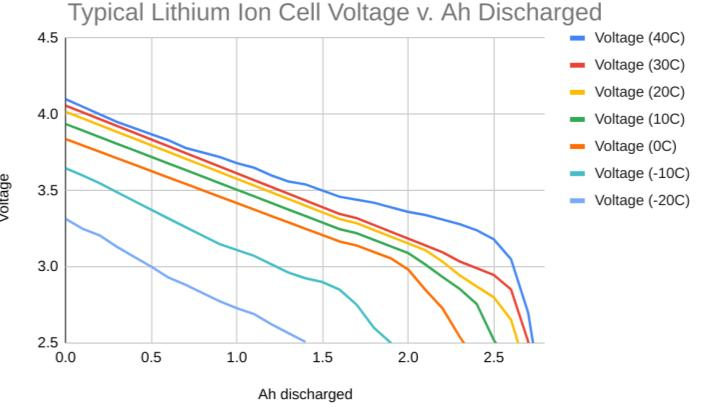TL;DR
Anyone who has hung out in EV-centric forums for any length of time has seen the acronym ‘GOM’ used to describe the estimate of the number of miles remaining in your EV’s battery. (Batteries don’t hold miles. Yeah, I’ve heard. We’ll cover that topic in a later column, but for now, just roll with it.)
All you really need to know is that GOM stands for “guess-o-meter,” but let’s dive a bit deeper than that.

It can be disconcerting to start a trip with plenty of margin of range to your destination, only to see that margin erode as the trip progresses before ultimately facing the dreaded “insufficient range” warning. But knowing what makes up that range estimate and compensating your driving accordingly can be a powerful antidote for range anxiety. Image credit: John Higham
The Nitty Gritty Details of the Guess-O-Meter
There is a Seinfeld episode where Kramer is driving with a car salesman, and they decide to see how far they can go with the needle pointing to “E.” They don’t refer to the fuel gauge as the GOM, but the uncertainty they exploit is similar in an ICE-mobile or an EV. That uncertainty is the gist behind the term GOM.
The earliest use of the term GOM as applied to an estimate of miles remaining (that I can document) is from the BMW ActiveE Facebook group circa 2011. This FB group was a tight-knit group of activists who loved driving electric and had a friendly chest-thumping camaraderie over who could drive the furthest in a day (or year). With a dash of hard-won factory knowledge, this group collaboration led to an understanding of all the variables that make up the range estimate. And guess-o-meter was not meant so much as a jab back at BMW but instead as to what the group thought of said estimate. Its use caught on from there. I did speak to one of the co-founders of Plug In America recently, and he recalls coining the term during his days selling Nissan Leafs in 2011. But he doesn’t have the receipts, so to speak.
Every modern car (EV or ICE) will estimate the range in miles (or km) until its energy source needs replenishing. Most ICE drivers glance at this number, somewhat subconsciously, and maybe round it to the nearest 20~50 miles. That’s because getting a tank of gas is typically straightforward and familiar. Most ICE drivers don’t fret if the range remaining is 69 or 73 miles. It’s just “about 70.” Charging your EV in the wild can be inconvenient and typically involves some downtime. The end result is what some call range anxiety, but what I’ll call range management. The point is, most drivers don’t think twice about filling up with gas, while charging an EV can require exercising a few brain cells.
Stated as monosyllabically as possible, EV drivers do, on occasion, obsess over the range estimate. “That GOM was 73 miles last night! And now it says 69! Where are my missing 4 miles?!” is a common refrain in EV-related social groups.
So what influences that estimate, anyway?

Two screenshots taken roughly 9 hours apart show a GOM at 229 miles in the evening and 220 miles the following morning. The difference? About 5°F colder in the morning, plus the fact that the car was probably up all night thinking warm thoughts of me… Note that the phone’s state of charge also dropped 9% overnight. Vampire drain will be the subject of a future column, but for now, just know that this type of behavior is business as usual. Image credit: John Higham
There are two primary factors to the GOM: the battery’s state of charge (SOC) and the car’s efficiency. If the SOC is given in kWh and the efficiency is given in mi/kWh, all you have to do is multiply these two numbers together to get an estimate of the remaining miles. And if you’re paying close attention, you’ve noticed that’s exactly what you’d do in an ICE-mobile. Determine how many gallons of fuel you have remaining, then multiply that by your best guess of the mileage (in MPG) until you gas up again.
If it were only that easy for an EV.
To be sure, every manufacturer will have their own secret sauce for determining SOC and efficiency, and each will emphasize some inputs more than others may, but there is no getting around physics. All manufacturers use the same observable information, albeit they will use it somewhat differently.
Determine two quantities, then multiply them together. How is that done?
Let’s start with what is obvious, at least to me, but may come as a surprise to some readers. You can’t measure energy in a battery like you can the volume of liquid in a tank. The energy remaining in a battery is based on an estimate. It is not directly measured. There is an entire branch of mathematics (technically a branch of statistics) called estimation theory that is used as the basis for the GOM for every EV on the road.
The most straightforward way of estimating the energy remaining in a battery is known as Coulomb counting. There is a device called a battery management system (or BMS) on every EV. This system measures the amps going into and out of a battery. Assuming the battery is really full when you think it is, you measure the amps of discharge multiplied by the time of discharge, leaving you with the battery’s amp-hours. Multiply the amp-hours by the measured voltage, and you have the energy remaining in kilo-Watt-hours (kWh). Various error sources can start creeping in, but it’s typically accurate to within 1~2%. This is how Columb counting works – it’s just the bookkeeping of amps in and out of the battery.
Coulomb counting can then be combined with other methods, such as cell voltage, to improve the overall estimate. If your eyes are already glossing over thanks to all the jargon, you should buckle down: I’m only scratching the surface. Nevertheless, I must introduce one more aspect of estimating the energy remaining in a battery, and that is temperature. The battery is a chemical energy storage device, and as with all chemical reactions, the temperature greatly impacts results. For a lithium-ion battery, the voltage of the battery drops sharply with falling temperatures. When combining the bookkeeping of amps in/out with voltage over temperature, the battery SOC is typically accurate within about 1%. The larger uncertainty is future efficiency.

The voltage of an individual cell (an EV may have thousands of individual cells in its battery) is not only a function of how much current has been discharged, but also of temperature. The graph above is meant to be representative of the general trend of all lithium-ion cells. You can learn more on this topic here. Graph by John Higham. (No lithium-ion cells were harmed in the construction of this graph.)
The next parameter that needs to be estimated is the EV’s efficiency. Most manufacturers will use the car’s efficiency over the last 20 or so miles as a basis for what the efficiency will be for the remaining “miles in the battery.” Predicting that the efficiency for the next 20 miles is similar to the last 20 miles is probably the best substitute for a crystal ball as anything, but it doesn’t take much imagination to see how this could quickly fall apart. Maybe during the last 20 miles, your heavy-footed spouse was driving. Or maybe it’ll start to rain. Or maybe a headwind will develop. Or there could be significant elevation gain coming up that the EV doesn’t “know about” (most EVs will account for large elevation changes in the GOM if you are using the car’s navigation system). The point is that many factors can change the car’s efficiency in the next 20 miles compared to the last 20 miles.
There are also internal systems that use electricity, like lights, heat, air conditioning, and even music. For example, the last 20 miles may have been driven during sunset while listening to a podcast, but now the sun is down, the temperature is dropping, and you just put on Pink Floyd’s The Wall. And you’ve got it cranked up to 11. All those things will change the car’s energy consumption and overall efficiency. These changes don’t really account for that much power as compared to propelling the car down the road at freeway speeds, but it isn’t zero, either. A 0.1mi/kWh change in efficiency could add up to a change of 10 miles in a large 100 kWh battery pack.
Now that the SOC of the battery has been estimated and the EV’s efficiency has been guesstimated, the product of those estimates will yield the expected number of miles remaining. As a quick example, assume the battery’s SOC is 34.5 kWh, and the guesstimated efficiency for those 34.5 kWh is 3.14 miles per kWh. Multiply those two numbers together, and you have 108.3 miles.
Live with your EV long enough, and you will get comfortable with the range estimate and, like Kramer in that Seinfeld episode, breaking new records of how low you can go. And you’ll also soon appreciate why it is called the GOM.
Next week’s topic is Congratulations! You bought an EV. Now what happens?








0 Comments